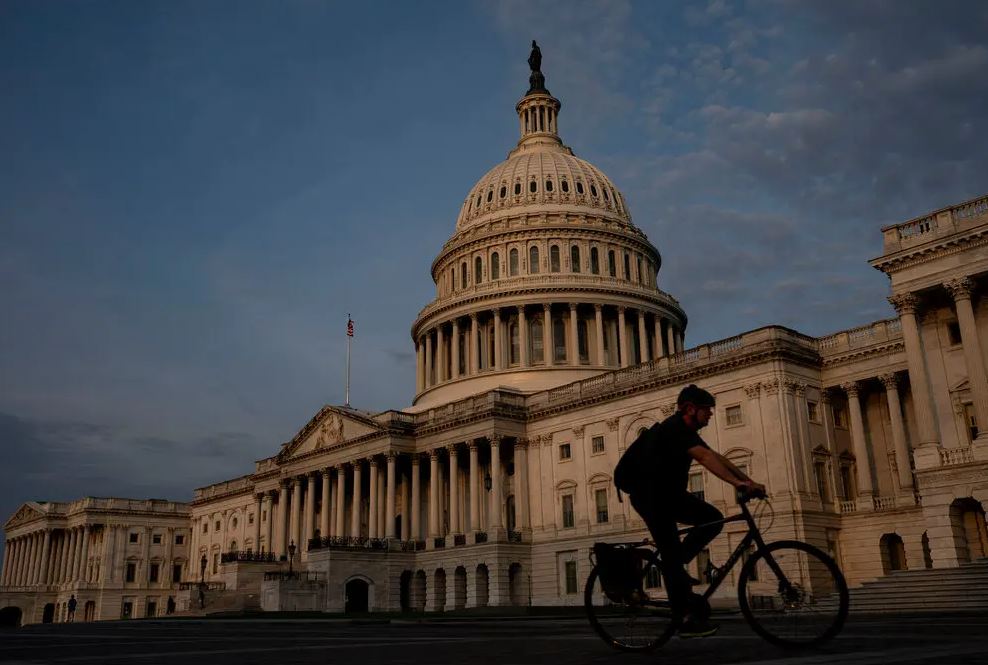The United States had its long-term credit rating lowered by Fitch Ratings on Tuesday due to the country’s huge and rising debt load and its proclivity for brinkmanship over America’s capacity to borrow money.
Fitch reduced the United States’ long-term rating from AAA to AA+. Two months after the United States barely averted defaulting on its debt, the country suffered its second ever credit downgrading. After the United States’ borrowing limit was reached on January 19, lawmakers spent weeks debating whether or not the country should be permitted to incur further debt in order to meet its financial obligations. Until Congress negotiated a last-minute deal in May to suspend the nation’s debt limit, the United States was in danger of defaulting on its obligations.
However, disagreements among legislators about where, when, and how much of the federal budget should be spent have raised the possibility of a government shutdown this autumn, notwithstanding the deal. Fitch’s decision to downgrade U.S. debt was influenced in part by the never-ending bickering over government spending.
Fitch noted the increasing national debt as a result of recent tax cuts and expenditure increases enacted by Congress. As the U.S. population ages, the cost of social security and medicare will skyrocket, but the country has made “limited progress” in addressing these issues, the company said.
Along with Moody’s and S&P Global Ratings, Fitch is one of the three main credit rating agencies in the world. The United States was removed off a list of risk-free borrowers for the first time in 2011 when S&P cut the country’s credit rating in the midst of a debt-limit crisis.
Fitch’s decision lowers America’s credit rating not just by the agency’s own standards, but also by the combined standards of the three major rating agencies.
Experts have expressed concern that Fitch’s decision might ultimately reduce demand for U.S. government debt. Because of these restrictions, investors who need an unblemished rating from all three main agencies will have to search elsewhere to meet their investment criteria if they want to acquire debt.
At a time when interest rates are at their highest point in 22 years, this might increase the price of the government’s borrowing. Given the breadth of the Treasury market and the persistent demand from investors for U.S. Treasury securities, however, most experts are sceptical that the effect will be significant.
Nonetheless, the downgrading is a black mark on the country’s track record of fiscal management. On Tuesday, the Biden administration responded strongly to Fitch’s reduction of the United States’ credit rating, stating that the agency’s methodology was flawed and that the downgrade did not accurately represent the state of the American economy.
Ms. Yellen called the move “arbitrary” and pointed out that Fitch’s ratings model had previously shown that the United States‘ governance will decline between 2018 and 2020, but the agency had held off on making any adjustments to the country’s rating until now.
According to anonymous sources inside the Biden administration, the administration was informed by Fitch prior to the downgrading and voiced their views at the time. They pointed out that Fitch representatives were quite vocal about their concerns about U.S. government, and that these concerns included the rebellion on January 6, 2021.
On the same day of the downgrading, on January 6th, former President Donald J. Trump was indicted for his extensive attempts to overturn the 2020 election.
Senate Majority Leader Chuck Schumer of New York blamed Republicans for the United States’ downgrading by Fitch because they would not agree to expand the country’s borrowing limit without significant concessions. He strongly suggested that desist from using the debt ceiling as a bargaining chip.
The federal government’s expenditure is reduced by $1.5 trillion over ten years as a result of the debt limit deal agreed in June. This reduction is achieved in part by freezing certain money that was anticipated to rise next year and restricting spending growth at 1 percent in 2025.
Both Congress and the White House refrained from making significant changes to costly but politically fraught programmes like retirement benefits. Spending cuts or no, the national debt of over $32 trillion is expected to surpass $50 trillion by the end of the decade.

